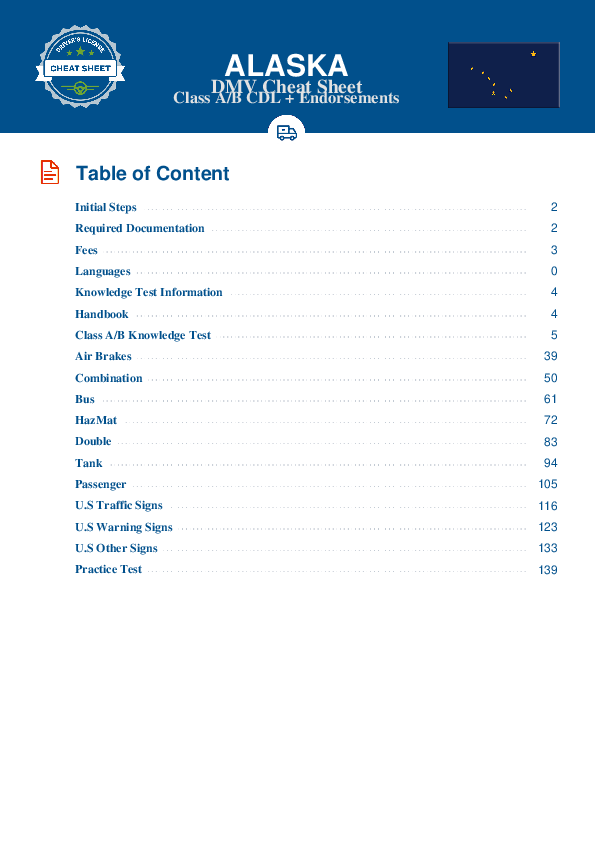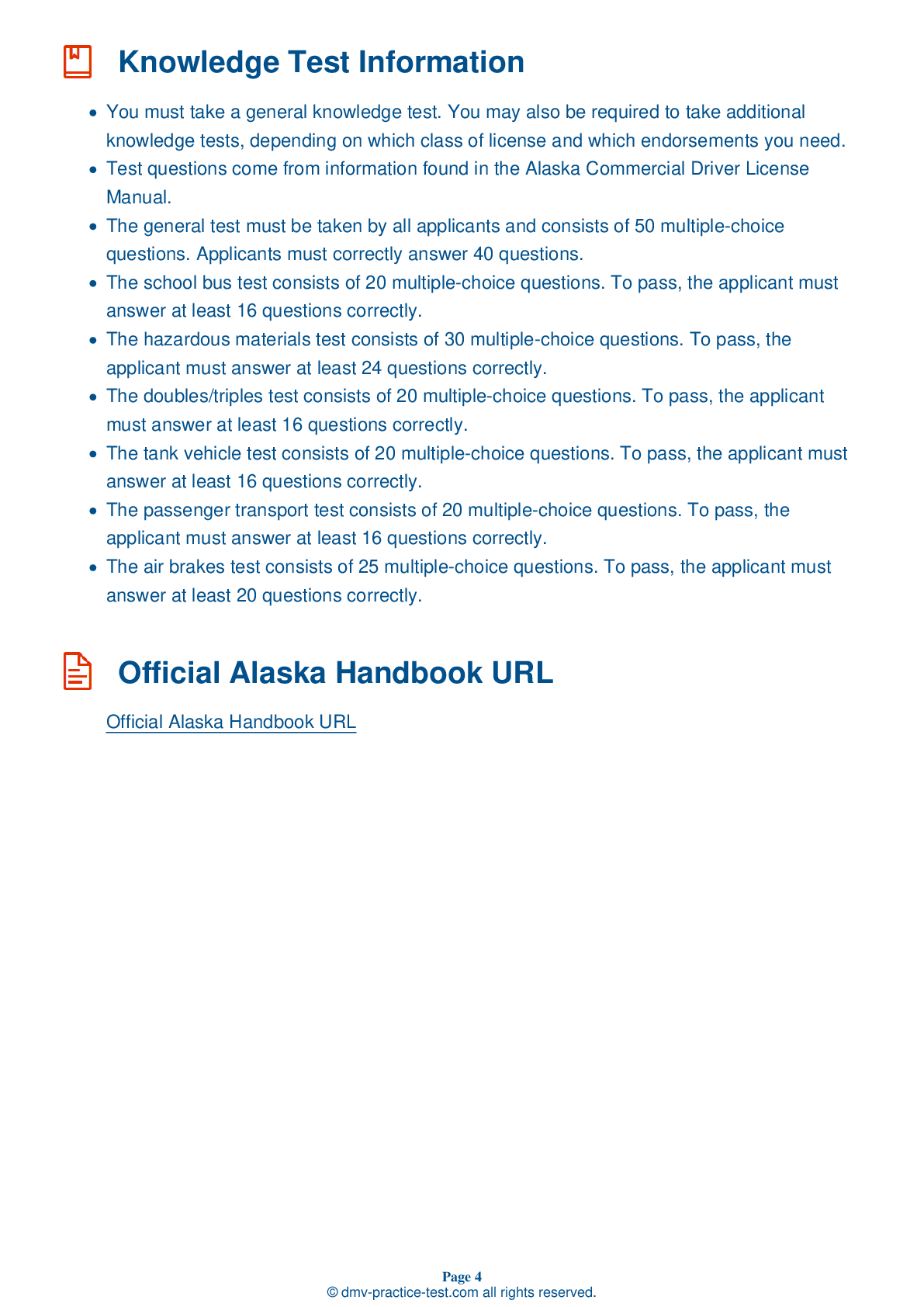Class B Driving Test | Alaska 2025 #1 Page 5 of 7
Train for FREE online with our Alaska class B license test. The official exam test consists of several obligatory parts, with all of them checking your knowledge of different blocks of road rules. If you need to obtain a AK CDL class B permit in 2025, practice as much as possible. Free sample tests published on our website will help you check and improve your knowledge and boost your grades. Please bear in mind that CDL class B requirements may vary from state to state.
29 . Placards should be used:
Warning placards are required to be used any time a vehicle is carrying designated types and amounts of hazardous materials. A placarded vehicle must display placards on all four of its sides.
30 . If the low air pressure warning signal comes on in a vehicle with air brakes, the driver should:
If the low air pressure warning signal comes on while you are operating a vehicle with air brakes, you should stop and safely park the vehicle as soon as possible. It is essential that you are able to stop safely while you still have some braking power remaining.
31 . If using a helper when backing a vehicle, the helper should be located:
When backing up, it is always a good idea for a driver to use a helper who can watch the vehicle's blind spots. The helper should stand near the back of the vehicle in a location where they are visible to the driver.
32 . If your wheels being to spin when accelerating on a poor traction surface, you should:
If your drive wheels begin to spin while accelerating on a surface with poor traction, you should remove your foot from the accelerator.
33 . What does blocking cargo do?
Blocking and bracing are used to prevent cargo from shifting in transit.
34 . Do not operate a vehicle if any brake drums have cracks that are larger than ____ of the width of the friction area.
Before beginning a trip, it is important to check the brake drums during your walk-around inspection. It is unsafe to drive if any brake drum has a crack more than one half of the width of the friction area.
35 . When experiencing cold weather, be sure to check your vehicle's alcohol evaporator:
An alcohol evaporator can help prevent ice from building up in an air brake system. In cold weather, the evaporator should be checked and refilled every day.
See the exact questions that will be on the 2025 Alaska DMV exam.
99.2% of people who use the cheat sheet pass the FIRST TIME
Lillian MCcranie explains how our CDL study guide was helpful in passing the exam and recommends it to everyone.
Cameron tells us how he purchased the CDL exam, and found it to be a useful tool which helped him pass the exam and find a job.



